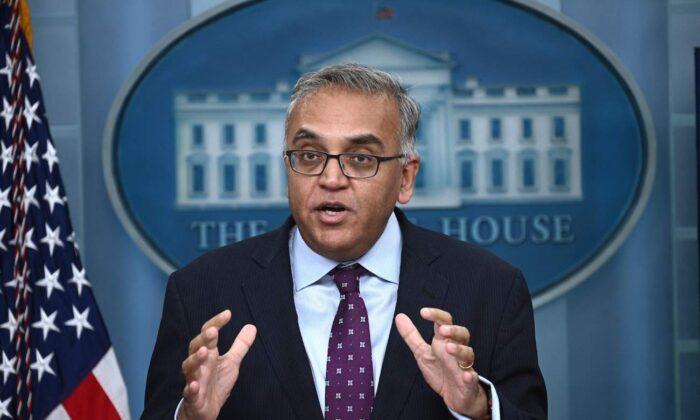COVID-19 vaccines and treatments that have been free of charge to consumers, due to U.S. government funding, will eventually transition to be provided via the regular health care system.
This means that certain COVID-19 tests, vaccines, and treatments, will cost more for some.
End of Emergency
Ashish Jha, the White House COVID-19 response coordinator, said in an interview with UCSF Department of Medicine that when the public health emergency (PHE) ends in May, the emergency use authorizations (EUAs) that have been granted by the U.S. Food and Drug Administration (FDA) to certain COVID-19 treatments and vaccines will not be affected, he said.“So, if on May 11 when the public health emergency ends, on May 12 you can walk into a CVS, get your bivalent vaccine, and it will be free [for you]. [If] you’ve got COVID on May 13, you can get your Paxlovid, it'll be free. It will be the stuff that the government has bought,” he said on Thursday.
The U.S. government has spent more than $30 billion of taxpayer money on COVID-19 vaccines, including new bivalent boosters, to in part ensure they would be provided free of charge, nonprofit KFF reported in December 2022.
It added that the government “has so far purchased 1.2 billion doses of Pfizer and Moderna COVID-19 vaccines combined, at a cost of $25.3 billion, or a weighted average purchase price of $20.69 per dose.”
Transition
Jha told the UCSF Department of Medicine: “The U.S. government, in an unprecedented way ... bought hundreds of millions of vaccines, lots of treatments, they’re bought with taxpayer money, and we have a bunch and we’re giving it out and we’re distributing it, and these are mostly emergency use products.”But Congress has not provided further funding to address COVID-19 efforts for “over a year” he said, adding: “It means that we’re going to stock out at some point, that we’re going to run out of [government-purchased] vaccines and treatments, and we have to move towards a more regular way of delivering vaccines and treatment.
Vaccines
Once the transition occurs, anyone with health insurance—whether public or private—will still be able to receive COVID-19 vaccines free of charge. This is because the Affordable Care Act requires that preventative services are available to consumers with no out-of-pocket costs. “Vaccines are preventable services,” Jha noted.But health insurance companies are not required to cover treatments under the Affordable Care Act. As such, COVID-19 treatments, once it transitions to the regular market, are expected to have some out-of-pocket costs depending on a person’s health insurance coverage.
Uninsured
Meanwhile, the uninsured will not be able to obtain vaccines or treatments free of charge.“We are creating a whole separate set of efforts for the uninsured because the uninsured will not be able to get vaccines for free and treatments for free,” Jha said, adding that the federal government is “working on a plan on that.”
He said no action needs to be taken right away on the matter because COVID-19 vaccines and treatments that the government purchased “will be available for the uninsured and for everybody else for a while.”




